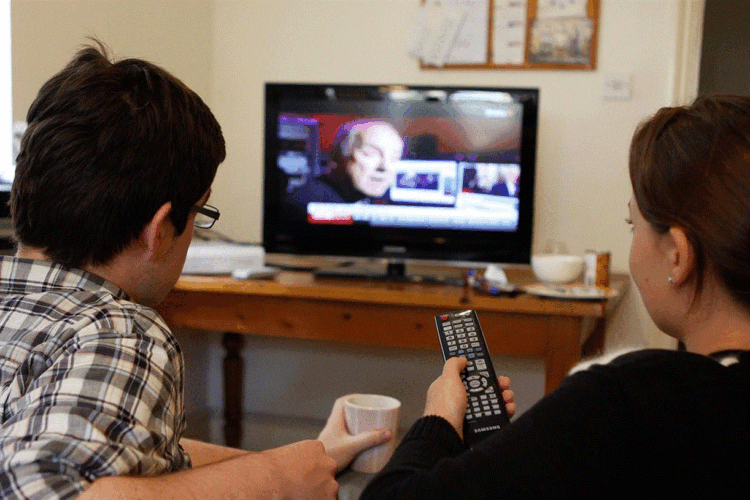By Sheila Mckenzie-
A high proportion of viewers are switching off traditional TV at record rates, a a new Ofcom report reveals.
Higher competition than ever from streamers, the proportion of people watching a programme on broadcast TV each week dropped from 83% in 2021 to 79% in 2022 – the biggest decline since records began, the watchdog said.
The media landscape has undergone a seismic shift in recent years, driven by the rapid growth of digital platforms and online content consumption. A new report by Ofcom reveals that a high proportion of viewers are switching off from traditional TV at record rates, with younger audiences leading the way.
The allure of digital streaming services like Netflix and Apple, combined with the popularity of social media sites like YouTube and TikTok, has disrupted the traditional television industry. In this article, we will appraise the implications of this significant trend and explore the factors driving the transition from traditional TV to digital platforms.
Changing Viewing Habits
The shift away from traditional TV viewing signifies a fundamental change in consumer habits.
The adoption of on-demand streaming services and social media by viewers as their primary sources of entertainment and information says a lot about changing times.
This change has major implications for broadcasters and advertisers who have long relied on TV audiences for revenue. As traditional TV viewership declines, broadcasters will need to adapt their content distribution strategies and embrace digital platforms to remain relevant.
Impact on Traditional Advertising
Traditional TV advertising has been a cornerstone of marketing strategies for decades. However, as viewers migrate to streaming services and social media platforms, the effectiveness of traditional advertising is diminishing.
The fact viewers are drawn to digital platforms, makes it more challenging than previously for traditional TV advertising to reach its intended audience. Advertisers will need to re-evaluate their marketing strategies and explore innovative ways to engage with consumers in the digital space.
The popularity of streaming services like Netflix, Apple TV+, and Amazon Prime Video appears to have transformed the way people consume content because these platforms offer a vast library of on-demand content, allowing viewers to watch their favourite shows and movies at their convenience.
The shift to streaming services represents a move towards personalized and curated content experiences, catering to individual preferences and interests. This trend has put pressure on traditional TV networks to enhance their offerings and compete with the diverse content libraries of digital platforms.
Social media platforms have clearly become more than just communication tools; they are now content hubs where creators share videos on a wide range of topics. These platforms offer a unique space for user-generated content, short-form videos, and influencer marketing.
As a result, they have gained a massive following, particularly among younger audiences who value authenticity and relatability in the content they consume. Traditional broadcasters must recognize the potential of social media and explore partnerships and collaborations to leverage these platforms’ reach.
Opportunities for Niche Content
One of the significant implications of the digital shift is the rise of niche content. While traditional TV often catered to a broad audience, digital platforms allow for hyper-targeted content creation. This has given rise to a plethora of niche genres and subcultures finding their own dedicated audiences.
Creators can now produce content specifically tailored to niche interests, enabling them to connect with a passionate and engaged community. This shift presents an opportunity for content creators and broadcasters to explore untapped markets and cater to diverse audience segments.
The findings by Ofsted show that public service broadcasters, traditionally responsible for providing unbiased news and informative programming, face significant challenges in this changing landscape.
As viewers migrate to digital platforms, the reach and impact of public service broadcasting are being questioned. Maintaining a healthy and informed democracy relies on accessible, credible, and reliable news sources. To address this, public broadcasters must leverage digital technologies to reach younger audiences while preserving their commitment to impartiality and quality journalism.
The digital shift raises questions about the role of regulation in the media industry.
Traditional TV has long been subject to strict regulatory guidelines governing content, advertising, and broadcasting standards. As digital platforms become dominant players, there is a need to address issues related to content moderation, misinformation, and data privacy.
Regulators may need to adapt to the digital landscape and ensure that consumer interests and societal values are protected across all media platforms.
As the digital era continues to evolve, the key to success for traditional TV networks lies in embracing digital platforms, tailoring content to niche audiences, and exploring new avenues for engaging with viewers.
Understanding and adapting to changing consumer habits can help the media industry thrive in this digital age and continue to offer compelling content to audiences worldwide.




